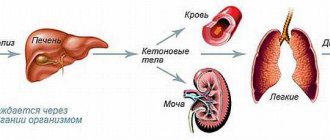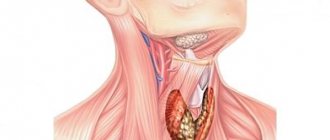Plugs in the palatine tonsils (or tonsils) are purulent accumulations in the lacunae of the tonsils. In medicine you can find other names for this pathology: purulent plugs, caseous plugs.
Most corks are white, but can have a yellow, brown or gray tint, depending on their composition.
Tonsil plugs may be soft to the touch or harder if they contain a large amount of calcium. Their size varies from a few millimeters to a centimeter. Both men and women are equally susceptible to their appearance, regardless of age.
Some patients mistakenly think that this condition does not need to be treated. But this is fundamentally wrong! The presence of purulent accumulations in the palatine tonsils contributes to the development of complications (not only in the upper respiratory tract, but even in the joints, kidneys and heart!).
Why does an accumulation of pus occur in the tonsils? How to treat tonsil plugs? And is it possible to carry out treatment at home? You will find answers to all your questions in our new article.
Tonsil plugs: causes
To find out the etiology of the occurrence of purulent accumulations in the tonsils, you need to understand what role the palatine tonsils play in the body.
The tonsils are an important organ of the human immune system, which is the first to stand in the way of bacteria and viruses that enter the body through the mouth. As soon as “strangers” reach the surface of the tonsils, they begin to intensify the production of leukocytes, which enter into battle with pathogenic microorganisms. As a result of such “battle actions”, dead leukocytes, bacteria, and epithelial remains accumulate in the lacunae of the tonsils. Over time, minerals accumulate here, and the contents of the lacunae begin to harden, forming caseous plugs.
The main cause of traffic jams is chronic tonsillitis. But they can also form in the palatine tonsils for various reasons:
- accumulation of staphylococci, streptococci, pneumococci and other bacteria;
- in people who have a weak immune system;
- frequent sore throats;
- the presence of herpes virus and fungi in the body;
- dental problems (caries);
- viral infections (flu, ARVI).
Each of the above reasons can provoke inflammation of the tonsils. The risk of accumulation of caseous masses in the lacunae of the tonsils is increased by unhealthy diet, smoking, and alcohol consumption.
Traffic jams do not form just like that, for no reason. They are a consequence of another disease and signal that an inflammatory process is underway in the body.
Cautions and Limitations
When treating purulent plugs on the tonsils, you should pay special attention to some restrictions. If pus remains on the tonsils when gargling, there is no way to forcefully get rid of it. Several manipulations with rinsing will help remove purulent plugs without damaging the mucous membrane. During manipulation, it is easy to damage the surface of the shell.
Purulent tonsillitis is treated only under the supervision of a physician. Therapy includes a set of rinses, medication, and traditional medicine recipes.
Severe bacterial tonsillitis is accompanied by the accumulation of pus on the tonsils. But the amount of these deposits and their prevalence do not in any way affect the patient’s condition; the main symptoms of the disease are caused by the inflammatory process.
With the help of properly prescribed therapy, the pus will disappear on its own in a few days. Complex treatment, including the use of rinsing, rubbing and other methods, will help to achieve a speedy recovery for a person.
Symptoms
Small accumulations, as a rule, do not cause significant symptoms. With large accumulations, the patient may experience the following symptoms of inflammation:
- bad breath;
- whitish dots are clearly visible on the surface of the tonsils;
- persistent sore throat;
- pain while swallowing;
- body temperature may be increased to 37-37.7 degrees;
- a feeling of discomfort at the site of accumulation of purulent masses;
- swollen tonsils;
- weakness, lethargy, general malaise;
- decreased performance;
- loss of appetite;
- enlarged lymph nodes;
- pain may radiate to the ears.
Traffic jams appear gradually, so in the early stages of the disease the patient experiences only discomfort when swallowing and a sore throat.
This condition is extremely dangerous for pregnant women! In addition to the fact that it has a detrimental effect on the general condition of the expectant mother, it can negatively affect the development of the fetus and, in the worst case, provoke a miscarriage. Therefore, it is extremely important to contact an otolaryngologist in time to receive competent recommendations on how to effectively treat tonsillitis during pregnancy and avoid complications.
Help yourself?
The biggest mistake most patients make is overconfidence that caseous plugs can be removed at home using improvised means. They use a whole arsenal of objects that are absolutely not intended for this: spoons, forks, toothpicks... At best, such amateur activities simply will not bring results, at worst, they will cause injury to the surface of the tonsils and provoke severe bleeding, swelling and inflammation! This will most likely be followed by a sore throat! Plus, if you press incorrectly with a hard object on the accumulation of pus, you can push it even further into the thickness of the tonsil.
Some people try to gargle, believing that gargling will bring relief. Yes, the feeling of discomfort in the throat temporarily passes, but the accumulations of pustules do not disappear, because the rinsing solution comes into contact only with the surface of the tonsils, and getting inside it is extremely problematic, or rather, impossible. Therefore, this method is also not effective.
The best method to get rid of traffic jams is to consult an otolaryngologist!
About the goals and features of therapy
The treatment procedure under consideration is aimed not only at cleansing the tonsils from accumulations of purulent formations. The goals of washing the lacunae of the palatine tonsils are also:
- stopping the development of colonies of infectious pathogens;
- relieving vasospasm of the tonsils;
- reduction of the inflammatory process;
- elimination of painful sensations;
- acceleration of recovery.
Washing the depressions in the accumulations of lymphoid tissue is indicated not only for adults, but also for young patients. The method is recognized as a very effective means of preventing:
- Chronic pharyngitis
. Plaque is removed using herbal decoctions. - Peritonsillar abscess
. The tonsils are washed with antiseptics (Furacilin, Chlorhexidine). - Sore throats
(acute, chronic forms). For cleansing, salt and soda solutions and the drug Rotokan are used.
Washing procedures are carried out both in medical clinics and at home. In the latter case, the patient must first consult with a doctor. The specialist will help you choose a solution for rinsing, taking into account the individual condition of the patient and the course of his illness, and will tell you about the features of washing the lacunae of the tonsils at home.
Possible complications
As already mentioned, the presence of clusters of caseous masses is not as harmless as it might seem at first glance. The danger of this condition is that pathogenic microflora from the lacunae of the tonsils can spread to other organs beyond the tonsils and provoke various kinds of complications:
- Peritonsillar abscess of tissue around the tonsils. A severe inflammatory process starts in the tissues around the tonsils. A patient with this condition experiences a sore throat. He can't help but feel like there's a foreign object stuck in his throat. There are difficulties with swallowing and wide opening of the mouth (trismus of the masticatory muscles). Periodically, the patient has a fever, and other unpleasant symptoms of intoxication of the body appear. In this case, only opening the peritonsillar abscess, sometimes with the simultaneous removal of the tonsils (abscessonsillectomy), will help improve the patient's condition.
- Cervical phlegmon is an infection of the tissue of the neck. The patient experiences severe pain at the site of inflammation, and the body temperature rises to 40°C. The danger is that a purulent infection can enter the blood and cause sepsis and purulent damage to other organs. The abscess can also descend into the mediastinum - the case where our heart is located. This inflammation is called mediastinitis. This is a disease with an extremely high mortality rate!
- Sepsis (blood poisoning), caused by infection in the blood. This condition is extremely dangerous for humans and requires urgent hospitalization.
- Kidney diseases.
- Joint diseases.
- Heart diseases.
Manifestations of pharyngomycosis
This disease, also called pharyngeal candidiasis, manifests itself in the form of ulcers in the throat. The signs of this disease are extremely specific, so it is difficult to confuse it with other pathologies. In the mouth of an infected person there will be not just abscesses, but a cheesy coating. It is always accompanied by dryness, burning and severe pain in the throat and upper respiratory organs. The presence of pus leads to the formation of an unpleasant taste.
The cause of candidiasis in the pharynx is Candida fungi, which can develop not only in the larynx, but also in other organs. For example, they are the ones that provoke thrush.
A fungus in a person’s throat does not immediately transform into pharyngomycosis. To activate the disease, a serious impetus is needed, for example, a sharp decrease in the functions of the immune system. Hormonal imbalance and even the use of dentures, which can become an excellent platform for the propagation of the pathogen, can have an impact. Sometimes a common cold is enough, but often candidiasis in the throat provokes more serious shocks. For example, the use of antibiotics, hormonal drugs or chemotherapy can lead to activation of the fungus. The red throat is proof of this.
Treatment of candidiasis in the pharynx should be carried out with the prescription of antifungal medications. In addition, the doctor may prescribe antiseptics and anti-inflammatory drugs to help the patient recover.
The cause of candidiasis in the pharynx is Candida fungi, which can develop not only in the larynx, but also in other organs. For example, they are the ones that provoke thrush.
A fungus in a person’s throat does not immediately transform into pharyngomycosis. To activate the disease, a serious impetus is needed, for example, a sharp decrease in the functions of the immune system. Hormonal imbalance and even the use of dentures, which can become an excellent platform for the propagation of the pathogen, can have an impact. Sometimes a common cold is enough, but often candidiasis in the throat provokes more serious shocks. For example, the use of antibiotics, hormonal drugs or chemotherapy can lead to activation of the fungus. The red throat is proof of this.
Treatment of candidiasis in the pharynx should be carried out with the prescription of antifungal medications. In addition, the doctor may prescribe antiseptics and anti-inflammatory drugs to help the patient recover.
Treatment of tonsil plugs
When contacting an ENT doctor, the patient is offered conservative treatment, which includes washing the tonsils, physiotherapeutic procedures and drug therapy.
There are two methods of rinsing: removing pus with a syringe and hardware rinsing. The method using a syringe is used much less frequently if the patient has a strong gag reflex. The most effective method is to wash the tonsils using a vacuum method using the Tonsillor apparatus. In our ENT clinic, we use a special vacuum attachment for this, which has no analogues today! With the help of this attachment, it is possible to effectively and painlessly wash the entire contents of the lacunae of the tonsils, and improve the patient’s condition after the first session.
Pathology treatment methods
When a person has a problem such as purulent formations in the larynx and tonsils, this requires urgent treatment. Moreover, it must be correct, that is, selected in accordance with the type of causative agent of the disease.
Only a doctor can determine the true cause of the development of the disease after conducting certain tests.
In cases where the factor contributing to the appearance of ulcers in the throat is bacteria, they will have to be fought with antibiotics. For this purpose, various drugs are used in the form of tablets or suspensions. In rare situations, when the disease is very advanced, injections may be prescribed. Using antibiotics without consulting a doctor is unacceptable. This approach to therapy is very dangerous and can lead to the development of serious complications. To treat ulcers in the throat, an antibiotic in the form of an aerosol is sometimes prescribed. This makes it easier for the active substance to get directly into the inflammation.
To exclude the development of complications, the doctor always additionally prescribes the use of drugs to strengthen the immune system. In addition, you can use medications to get rid of dangerous and unpleasant symptoms. For example, Aspirin or Ibuprofen are good for reducing fever. Washing the throat in the presence of ulcers is a mandatory component of treatment. This will require solutions of Furacilin, Iodinol, Miramistin or boric acid. As a rule, the course of eliminating ulcers in the throat is 10 days, but much depends on the type of pathogen and the severity of the disease.
Traditional medicine can also be used as additional therapy. Natural antiseptics such as oak bark, chamomile flowers and sage help well in the fight against ulcers in the throat. These components are brewed, filtered, and then used to rinse the mouth.
If the doctor offers additional treatment in the form of special procedures, you should not refuse it. Physiotherapy for purulent inflammation of the throat will be very useful. UHF, phonophoresis and magnetic therapy give a good effect and quickly eliminate formations in the larynx and tonsils.
To exclude the development of complications, the doctor always additionally prescribes the use of drugs to strengthen the immune system. In addition, you can use medications to get rid of dangerous and unpleasant symptoms. For example, Aspirin or Ibuprofen are good for reducing fever. Washing the throat in the presence of ulcers is a mandatory component of treatment. This will require solutions of Furacilin, Iodinol, Miramistin or boric acid. As a rule, the course of eliminating ulcers in the throat is 10 days, but much depends on the type of pathogen and the severity of the disease.
Traditional medicine can also be used as additional therapy. Natural antiseptics such as oak bark, chamomile flowers and sage help well in the fight against ulcers in the throat. These components are brewed, filtered, and then used to rinse the mouth.
If the doctor offers additional treatment in the form of special procedures, you should not refuse it. Physiotherapy for purulent inflammation of the throat will be very useful. UHF, phonophoresis and magnetic therapy give a good effect and quickly eliminate formations in the larynx and tonsils.
To strengthen the immune system, you need to follow a proper diet. This is very important, since poor nutrition can have an extremely negative impact on the condition of the body as a whole and will aggravate the situation with a sore throat. To strengthen the immune system, it is necessary to include foods high in vitamin C in your daily diet. In addition, compounds of group B and PP will be useful. Drugs like Immunal are well suited to normalize the body's defenses and improve its resistance to disease.











